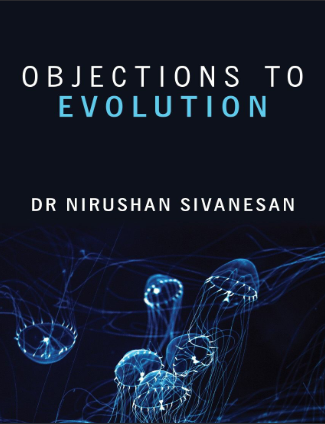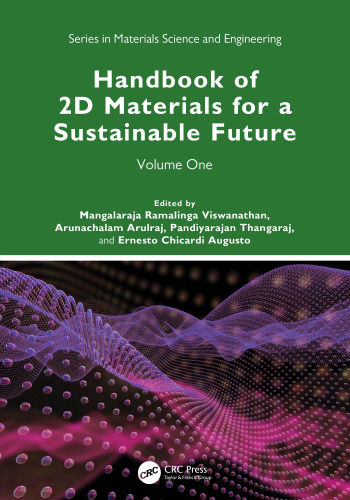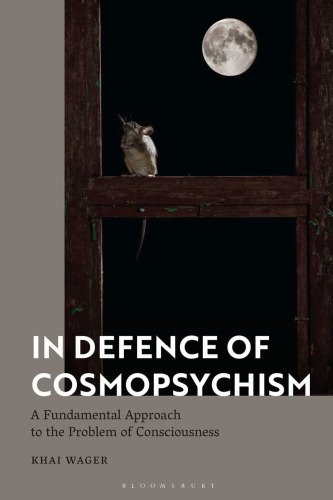hypothesis – they are falsification tests. So using our toaster example from before: 1. [P] The kitchen power supply is not working; 2. [P] The kitchen lights rely on this power supply; 3. [C] Therefore the kitchen lights will not work; Test result a: the kitchen lights work. [falsified] Test result b: the kitchen lights don’t work. [proof] So the issue of circularity in the above example does not arise. Because, even though it is presumed that the power supply has failed, this is only done to prove the hypothesis wrong; not to prove the hypothesis right. But if the lights do not work in the test, then this is used as evidence/proof for the hypothesis, as even though it is technically circular reasoning, it is acceptable, as the test could have falsified the theory had the result been different. So proof for a scientific hypothesis comes when the hypothesis survives a falsification test. But take this example: 1. [P] The kitchen power supply is not working; 2. [P] The bedroom power supply is working; 3. [C] Therefore the toaster will work in the bedroom; Test result a: the toaster doesn’t work in the bedroom. [not falsified] Test result b: the toaster works in the bedroom. [not proof] The toaster not working in the bedroom does not falsify the hypothesis, as the kitchen power supply failure could still be true: perhaps the toaster was damaged during the test; or perhaps the failure of the kitchen power supply was caused by a lightning strike which also simultaneously damaged all appliances that were connected to the kitchen power supply at the time. Consequently, this test is not specifically testing the hypothesis, as it does not provide a falsification opportunity; and testable predictions (conclusions) of a scientific hypothesis must be falsifiable. So even if the toaster works in the bedroom, this cannot be used as proof for the hypothesis, as it is a case of circular reasoning. Numerous examples of evolutionary theory using such reasoning will be provided in subsequent chapters. Abduction or abductive reasoning uses reasonable inference to produce the most probable explanation for an observation. Deductive reasoning also explains observations but the crucial difference is that deduction starts with a theory as a premise, which it necessarily considers to be true: whereas, abduction does not start with a premise nor build its conclusion on a premise – it starts with observations and then explains these with a “best-fit” approach. While deduction produces certain conclusions, abduction produces plausible conclusions that will always have an element of uncertainty about them – they are generally considered the “best available” rather than empirically true. For example, you return home to find the house a mess and use abduction to conclude that the children have done this, as this is the best explanation in your mind, even though there are other possibilities, such as a burglary or an earthquake. Clinicians in medical practice will often use abductive reasoning – examination findings will lead them to draw conclusions about the likelihood of a disease. However, abduction on its own only assists in producing the most likely hypothesis: it cannot complete the scientific method and convert a hypothesis to a scientific theory. This is because testability is integral to the scientific method. A doctor may use abduction to conclude that a patient’s cough was caused by asthma, which can then lead to the hypothesis that the patient has asthma; but this can only be confirmed to be a scientific theory through further investigations and tests. Similarly, abductive reasoning may assist in producing the evolutionary theory hypothesis, but experimental testing would be required to convert this hypothesis into a scientific theory. So abduction is used to produce the best explanation for a specific set of observations that have already happened (they are historic): what caused the mess in the house; what caused these symptoms; what caused biodiversity. Whereas, induction is not explaining the cause of observations; it is using observations to produce a hypothesis which can become a scientific theory that explains an aspect of nature and makes meaningful predictions. So abduction explains; induction hypothesises, as illustrated below: Science, primarily through induction, uses observations to make generalisations about the future, whereas historical investigations, primarily through abduction, establish the cause of observations and thereby explain the past. But in the scientific method, abduction may assist induction in producing a hypothesis, as shown in the example below: Abduction is used to explain the historical cause of the observation, and then induction uses this explained observation to produce the hypothesis – abduction interprets the observation into the explanation and induction converts this explanation into the hypothesis. Note that both the explanation and the hypothesis can be wrong, as both processes (interpretation and conversion) are subject to error. So, unlike deductive reasoning, abductive and inductive reasoning do not lead to certain conclusions. Also, note how the explanation not only assists in producing the hypothesis, but can be used as evidence for the hypothesis: a lack of rain is evidence that weather patterns are changing. The distinction made above between the abduction (resulting in the explanation) and the induction (resulting in the hypothesis) is subtle but philosophically significant. Consider this example: Abduction, through detective work, concludes that Peter committed all the burglaries. But this is historical and that is as far as abduction can go. To cross from was to is (from Peter was a serial burglar to Peter is a serial burglar), we need to go from abduction to induction. This allows us to go from past to present and state that Peter is a serial burglar, which implies that he continues to burgle: this provides predictions about the future which can be tested and falsified – perhaps Peter no longer burgles, in which case he was a burglar, as abduction explained, but no longer is, invalidating the hypothesis produced by induction. So in summary, there are four processes in the scientific method which can be separated from one another: 1. Data and observations. [Perception] 2. Interpretation of data/observations (explanations). [Abduction] 3. Conversion of explanations to hypothesis (evidence). [Induction] 4. Testing the hypothesis (verification/falsification). [Deduction] In this investigation into evolutionary theory, we will not be critiquing the primary observations and data (facts in nature), and instead will focus on processes 2, 3 and 4 listed above. The falsifiability of evolutionary theory Evolutionary theory proposes that it is falsifiable. The most well-known argument for falsifiability of evolutionary theory was proposed by John Haldane, a famed British evolutionist. He stated that finding “fossil rabbits in the Pre-Cambrian era” would immediately disprove evolutionary theory, as, according to current scientific thought, mammals did not emerge until approximately 40 million years ago, whereas the Pre-Cambrian era ended approximately 570 million years ago.[4] It is important to note that some falsification tests are not the same as others. For example, if I hypothesise that there is an elephant in your house, you could easily falsify this hypothesis by walking through your house and seeing for yourself that there is no elephant. This is known as “evidence of absence”, in other words, the evidence that something is absent. But if I say to you that there is a ladybird in your house, it might not be so easy (or practical) for you to falsify this theory by checking the whole house for a ladybird, and a search is likely to result in the “absence of evidence” whereby a ladybird cannot be found. In the case of the elephant, the absence of the elephant acts as evidence to disprove the theory, whereas in the case of the ladybird, the absence of the ladybird does not disprove the theory. This essentially is the difference between the “evidence of absence” and the “absence of evidence
چکیده فارسی
فرضیه - آنها آزمون های جعلی هستند. بنابراین با استفاده از نمونه توستر قبلی: 1. [P] منبع تغذیه آشپزخانه کار نمی کند. 2. [P] چراغ های آشپزخانه به این منبع تغذیه متکی هستند. 3. [C] بنابراین چراغ های آشپزخانه کار نمی کنند. نتیجه آزمایش الف: چراغ های آشپزخانه کار می کنند. [جعلی] نتیجه آزمایش b: چراغ های آشپزخانه کار نمی کنند. [اثبات] پس مسئله دایره ای بودن در مثال بالا مطرح نمی شود. زیرا اگرچه فرض بر این است که منبع تغذیه از کار افتاده است، اما این کار فقط برای اثبات اشتباه فرضیه انجام می شود. نه برای اثبات درستی فرضیه اما اگر نورها در آزمون کار نکنند، از این به عنوان مدرک/برهان برای فرضیه استفاده میشود، زیرا اگرچه از نظر فنی استدلال مدور است، اما قابل قبول است، زیرا اگر نتیجه متفاوت بود، آزمایش میتوانست نظریه را جعل کند. بنابراین اثبات یک فرضیه علمی زمانی به دست میآید که فرضیه از آزمون جعل جان سالم به در ببرد. اما این مثال را در نظر بگیرید: 1. [P] منبع تغذیه آشپزخانه کار نمی کند. 2. [P] منبع تغذیه اتاق خواب کار می کند. 3. [C] بنابراین توستر در اتاق خواب کار خواهد کرد. نتیجه آزمایش الف: توستر در اتاق خواب کار نمی کند. [جعل نشده] نتیجه آزمایش b: توستر در اتاق خواب کار می کند. [نه اثبات] کار نکردن توستر در اتاق خواب فرضیه را جعل نمی کند، زیرا خرابی منبع تغذیه آشپزخانه همچنان می تواند درست باشد: شاید توستر در طول آزمایش آسیب دیده باشد. یا شاید خرابی منبع تغذیه آشپزخانه در اثر برخورد صاعقه ایجاد شده باشد که به طور همزمان به تمام وسایلی که در آن زمان به برق آشپزخانه متصل بودند نیز آسیب وارد کرده است. در نتیجه، این آزمون به طور خاص فرضیه را آزمایش نمی کند، زیرا فرصت ابطال را فراهم نمی کند. و پیشبینیهای (نتیجهگیری) قابل آزمایش یک فرضیه علمی باید قابل ابطال باشند. بنابراین حتی اگر توستر در اتاق خواب کار کند، نمی توان از این به عنوان دلیلی برای فرضیه استفاده کرد، زیرا این یک مورد استدلال دایره ای است. نمونه های متعددی از نظریه تکاملی با استفاده از چنین استدلالی در فصل های بعدی ارائه خواهد شد. آدم ربایی یا استدلال ربایشی از استنتاج معقول برای ارائه محتمل ترین توضیح برای یک مشاهده استفاده می کند. استدلال قیاسی مشاهدات را نیز توضیح میدهد، اما تفاوت اساسی این است که استنتاج با یک نظریه به عنوان یک مقدمه شروع میشود، که لزوماً آن را درست میداند: در حالی که، ربایش نه با یک مقدمه شروع میشود و نه نتیجهگیری خود را بر اساس یک مقدمه میسازد، بلکه با مشاهدات شروع میشود و سپس این موارد را با رویکرد "بهترین مناسب" توضیح می دهد. در حالی که استنتاج نتیجهگیریهای معینی را تولید میکند، ربوده شدن نتایج قابل قبولی را تولید میکند که همیشه عنصری از عدم قطعیت در مورد آنها دارند – آنها عموماً «بهترین موجود» در نظر گرفته میشوند تا اینکه از نظر تجربی درست باشند. به عنوان مثال، شما به خانه برمی گردید تا متوجه شوید که خانه به هم ریخته است و از آدم ربایی استفاده می کنید تا به این نتیجه برسید که بچه ها این کار را انجام داده اند، زیرا این بهترین توضیح در ذهن شماست، حتی اگر احتمالات دیگری مانند دزدی یا زلزله وجود داشته باشد. پزشکان در عمل پزشکی اغلب از استدلال ابداعی استفاده می کنند - یافته های معاینه آنها را به نتیجه گیری در مورد احتمال بیماری هدایت می کند. با این حال، آدم ربایی به تنهایی به تولید محتملترین فرضیه کمک میکند: نمیتواند روش علمی را تکمیل کند و یک فرضیه را به یک نظریه علمی تبدیل کند. این به این دلیل است که آزمایش پذیری جزء جدایی ناپذیر روش علمی است. پزشک ممکن است از آدم ربایی استفاده کند تا به این نتیجه برسد که سرفه بیمار ناشی از آسم است، که سپس می تواند به این فرضیه منجر شود که بیمار مبتلا به آسم است. اما تنها با بررسی ها و آزمایش های بیشتر می توان این یک نظریه علمی را تایید کرد. به طور مشابه، استدلال ابداعی ممکن است به تولید فرضیه نظریه تکامل کمک کند، اما برای تبدیل این فرضیه به یک نظریه علمی، آزمایش تجربی لازم است. بنابراین آدم ربایی برای ارائه بهترین توضیح برای مجموعه خاصی از مشاهدات که قبلاً اتفاق افتاده (تاریخی هستند) استفاده می شود: چه چیزی باعث آشفتگی در خانه شده است. چه چیزی باعث این علائم شده است؛ چه چیزی باعث تنوع زیستی شد در حالی که استقرا توضیح دهنده علت مشاهدات نیست; از مشاهدات برای تولید فرضیه ای استفاده می کند که می تواند به یک نظریه علمی تبدیل شود که جنبه ای از طبیعت را توضیح می دهد و پیش بینی های معناداری می کند. بنابراین آدم ربایی توضیح می دهد; فرضیه های استقرا، همانطور که در زیر نشان داده شده است: علم، در درجه اول از طریق استقراء، از مشاهدات برای تعمیم در مورد آینده استفاده می کند، در حالی که تحقیقات تاریخی، عمدتاً از طریق آدم ربایی، علت مشاهدات را تعیین می کند و در نتیجه گذشته را توضیح می دهد. اما در روش علمی، ربودن ممکن است به استقرا در ایجاد یک فرضیه کمک کند، همانطور که در مثال زیر نشان داده شده است: ربایش برای توضیح علت تاریخی مشاهده استفاده می شود، و سپس استقرا از این مشاهده توضیح داده شده برای تولید فرضیه استفاده می کند - ربایش مشاهده را تفسیر می کند. به تبیین و استقراء این تبیین را به فرضیه تبدیل می کند. توجه داشته باشید که هم توضیح و هم فرضیه ممکن است اشتباه باشد، زیرا هر دو فرآیند (تفسیر و تبدیل) در معرض خطا هستند. بنابراین، بر خلاف استدلال قیاسی، استدلال ابداعی و استقرایی به نتیجه خاصی نمی رسد. همچنین، توجه داشته باشید که چگونه این توضیح نه تنها به تولید فرضیه کمک می کند، بلکه می تواند به عنوان مدرکی برای فرضیه استفاده شود: کمبود باران شاهدی بر تغییر الگوهای آب و هوایی است. تمایزی که در بالا بین ربوده شدن (در نتیجه توضیح) و استقرا (در نتیجه فرضیه) ایجاد شد، ظریف اما از نظر فلسفی قابل توجه است. این مثال را در نظر بگیرید: آدم ربایی، از طریق کارآگاهی، به این نتیجه می رسد که پیتر تمام سرقت ها را انجام داده است. اما این تاریخی است و تا آنجاست که آدم ربایی می تواند پیش برود. برای عبور از was to is (از پیتر یک سارق سریالی بود تا پیتر یک سارق سریالی است)، باید از آدم ربایی به القاء برویم. این به ما اجازه میدهد از گذشته به حال برویم و بگوییم که پیتر یک سارق زنجیرهای است، که نشان میدهد او به دزدی ادامه میدهد: این پیشبینیهایی درباره آینده ارائه میدهد که میتوان آنها را آزمایش کرد و جعل کرد - شاید پیتر دیگر دزدی نمیکند، در این صورت بود. یک سارق، همانطور که آدم ربایی توضیح داد، اما دیگر نیست، فرضیه ایجاد شده توسط استقرا را باطل می کند. بنابراین به طور خلاصه، چهار فرآیند در روش علمی وجود دارد که می توان آنها را از یکدیگر جدا کرد: 1. داده ها و مشاهدات. [ادراک] 2. تفسیر داده ها/ مشاهدات (توضیحات). [ربایش] 3. تبدیل تبیین به فرضیه (شواهد). [استقرا] 4. آزمون فرضیه (تأیید / جعل). [استنتاج] در این تحقیق در مورد نظریه تکاملی، ما مشاهدات و داده های اولیه (حقایق در طبیعت) را نقد نخواهیم کرد، و در عوض بر روی فرآیندهای 2، 3 و 4 که در بالا ذکر شد تمرکز خواهیم کرد. ابطال پذیری نظریه تکاملی نظریه تکاملی پیشنهاد می کند که این نظریه ابطال پذیر است. معروف ترین استدلال برای ابطال پذیری نظریه تکامل توسط جان هالدان، تکامل گرا مشهور بریتانیایی ارائه شد. او اظهار داشت که یافتن «خرگوشهای فسیلی در دوران پیش از کامبرین» فوراً نظریه تکامل را رد میکند، زیرا طبق تفکر علمی کنونی، پستانداران تا تقریباً 40 میلیون سال پیش ظهور نکردهاند، در حالی که دوران پیش از کامبرین تقریباً 570 میلیون سال به پایان رسیده است. پیش.[4] توجه به این نکته ضروری است که برخی از تست های ابطال با بقیه یکسان نیستند. به عنوان مثال، اگر من فرض کنم که یک فیل در خانه شما وجود دارد، به راحتی می توانید این فرضیه را با قدم زدن در خانه خود و مشاهده اینکه فیل وجود ندارد، جعل کنید. این به عنوان «شواهد غیبت» شناخته می شود، به عبارت دیگر، دلیل بر غایب چیزی است. اما اگر به شما بگویم که یک کفشدوزک در خانه شما وجود دارد، ممکن است برای شما چندان آسان (یا عملی) نباشد که این نظریه را با بررسی کل خانه برای یک کفشدوزک جعل کنید، و احتمالاً جستجو به این نتیجه می رسد: عدم وجود مدرک” که به موجب آن کفشدوزک نمی توان یافت. در مورد فیل، غیبت فیل به عنوان دلیلی برای رد این نظریه عمل می کند، در حالی که در مورد کفشدوزک، عدم وجود کفشدوزک نظریه را رد نمی کند. این اساساً تفاوت بین "شواهد غیبت" و "عدم وجود مدرک
است
ادامه ...
بستن ...
All rights reserved. No part of this publication may be reprinted or
reproduced or transmitted in any form or by any means, electronic or
mechanical, or other means, now known or hereafter invented, including
photocopying and recording, or in any information storage or retrieval
system, without permission in writing from the author.
© Nirushan Sivanesan 2021
The right of Nirushan Sivanesan to be identified as the author of this work
has been asserted by him in accordance with the Copyright, Designs and
Patents Act 1988
First published in 2019
ISBN 978-1091362901 (Paperback)
ISBN 979-8491803156 (Hardback)
ASIN B09HQ3M3BP (Ebook)
Revised Edition 2021
ادامه ...
بستن ...










